Top 5 Reasons a Nanofiber Performance Layer Filter is Worth It
Nanotechnology is the manipulation of matter at near-atomic levels & when applied as a performance layer for industrial air filtration it offers many benefits over conventional filters.
What are Nanofiber Filters?
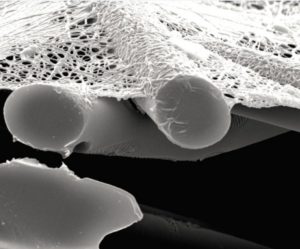
Nanotechnology is the manipulation of matter at near-atomic levels, where unique phenomena enable novel applications.1 One example of nanotechnology is the use of nanofibers as a performance layer for industrial air filtration applications. To produce a nanofiber layer, an electro-spinning process creates a very fine, continuous, resilient fiber of 0.2 – 0.3 micron in diameter that is then applied to a filtration media substrate material. The nanofibers form a permanent web with very fine interstitial spaces on the surface of the substrate. The web collects dust, dirt and contaminants on the surface of the filter; this offers many benefits over conventional filters built with cellulose, cellulose/synthetic, spunbond, or meltblown commodity filtration media.
Why Use Nanofiber Filters?
Although the cost to purchase premium nanofiber performance layer filters for a dust collector can be higher than commodity media filters, a strong argument can be made that the nanofiber layer filters are well-worth the higher buying price. Following are the top 5 reasons a premium nanofiber performance layer filter is worth it:
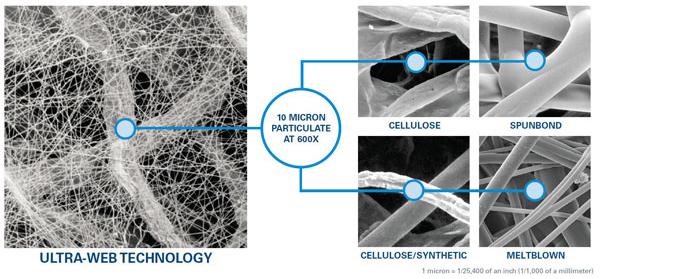
Reasons to Use a Nanofiber Layer
1. Higher Initial & Ongoing Efficiency.
A primary function of a dust collector is to control and minimize emissions generated by a manufacturing process. Clean, new filters typically have lower efficiencies (and, therefore, higher emissions) compared to filters with a build-up of dust on them. When clean, a nanofiber layer on the surface of the filtration media captures dust particles better than clean filters without a nanofiber layer, see Figure 1. This performance is made possible through several filtering mechanisms including interception, diffusion and impaction, see Figure 2.

But initial efficiency is only a small part of the whole story. Most industrial dust collectors utilize some method of filter cleaning to manage the build-up of dust on the filter surface over the life of the filter. Each time a filter is cleaned (typically by a reverse-pulse of compressed air), the dust deposited on the filter media is disrupted and an emission-producing event can occur. With a nanofiber performance layer filter, the collected dust accumulates on the surface of the filtration media rather than within the media and is cleaned off with fewer pulses. Fewer pulses results in fewer potential emission-producing events.
2. Lower Pressure Drop Across the Filtration Media
A lower pressure drop across the filtration mediasaves energy. Most dust collection systems rely on a fan to draw dust-laden air from a contaminant source to a collector and then through the filtration media. The energy (static pressure) required to move the air through the filtration system defines the necessary fan size and, therefore, the effective energy required to operate the system. The restriction created by a filter media and the captured particulate can be a significant contributor to the overall fan energy requirement of a system. In commodity media filters, much of the filtered dust particulate can be driven deep into the media’s pores. This depth-loading of the filtration media cannot be cleaned as well as the surface-loaded particulate with a nanofiber performance layer filtration media, see Figure 3. When the captured dust cannot be cleaned from the media depth, higher stable pressure differentials are created across the filtration media and energy demand goes up. Because the nanofiber layer media captures dust on the surface reducing depth loading, it cleans more completely and operates at a lower pressure differential across the filtration media reducing energy demands. Lower restriction across the filtration media results in lower overall system energy requirements and smaller fan requirements when designing a new system and selecting components. Even greater energy savings are possible if the system fan is configured with a variable frequency drive control system.

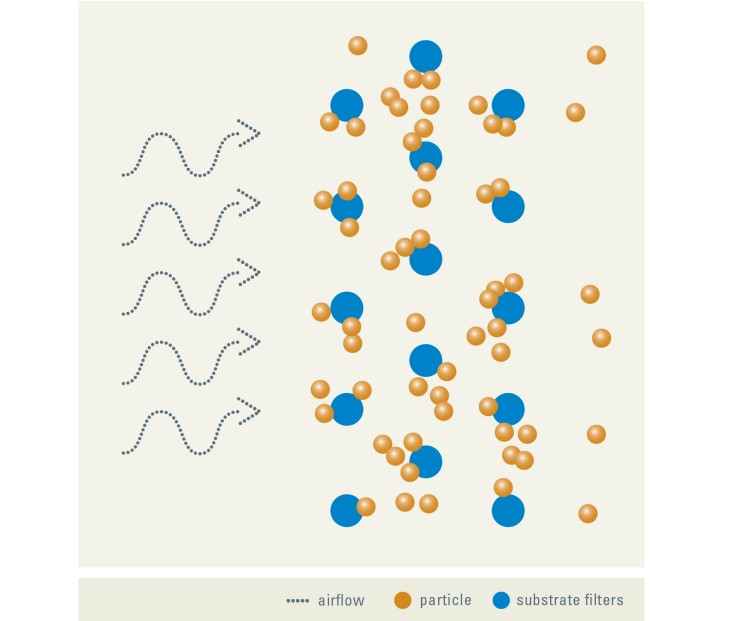
3. Less Compressed Air for Pulse-jet Cleaning
Less compressed air consumption required for pulse-jet cleaned dust collection systems. Score another advantage for a surface-loading nanofiber layer media! As mentioned above, when dust is captured on the surface of a filtration media, it requires much fewer compressed air pulses to clean than a depth-loaded media, see Figure 4. Fewer pulses of compressed air results in lower overall compressed air consumption, which in turn, reduces the energy demands on the compressor and the costs for compressor operation.
Clean Nanofiber Layer
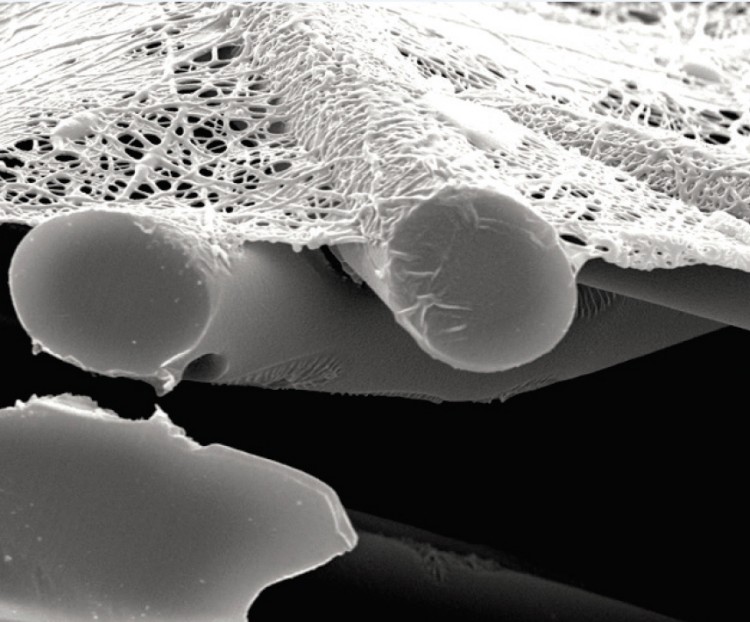
Surface Loaded Nanofiber Layer
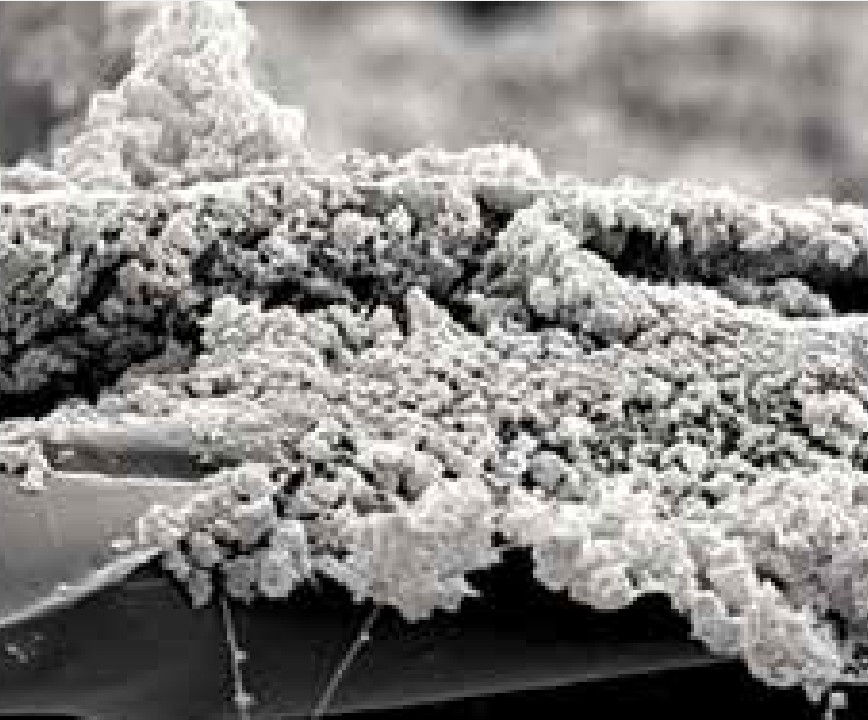
FIGURE 4 – Nanofiber media is loaded with ISO fine dust. Dust particles collect on the surface of the media and clean off easily while the substrate stays clean. A depth-loading filter would allow dust particles to penetrate deeply into the substrate where they build up and choke off the airflow.
4. Longer Filter Life.
Most dust collector filters reach an end of life when the filtration media is fully depth-loaded and can no longer be cleaned to an acceptable degree to allow design airflow with the available fan in the system. Because of the nanofiber efficiency layer and surface loading characteristics, nanofiber layer filters last significantly longer than traditional commodity filter elements. Longer filter life means buying new filters less frequently, saving considerable money over time. Additionally, longer filter life reduces the frequency of costly operation downtime for filter change maintenance activities.
5. Flexibility in Filter Configuration to Help Solve Problems
Nanofiber performance layer media can be produced on a variety of substrate materials and built into many different filter configurations. A nanofiber layer can be applied on cellulose, synthetic, and spunbond media substrates improving the performance of each of these media. The substrates can be selected for their unique anti-static, temperature, or moisture-resistant properties while still obtaining the advantages of the nanofiber performance layer. Nanofiber performance layer filters have been available as cartridge filters for years, but manufacturers are now offering these media in pleated bag and fluted filter configurations.
Summary
The expansion of filter configurations and the availability of premium nanofiber performance layer filters for a broader variety of applications means more dust collector operators can make the switch from commodity filters, reducing their emissions, saving energy, and improving their bottom line.
1 National Nanotechnology Initiative (www.nano.gov)

AST Canada has been helping clients find solutions for their unique Dust, Mist & Fume Collection needs for more than 40 years.
We can help you too.

